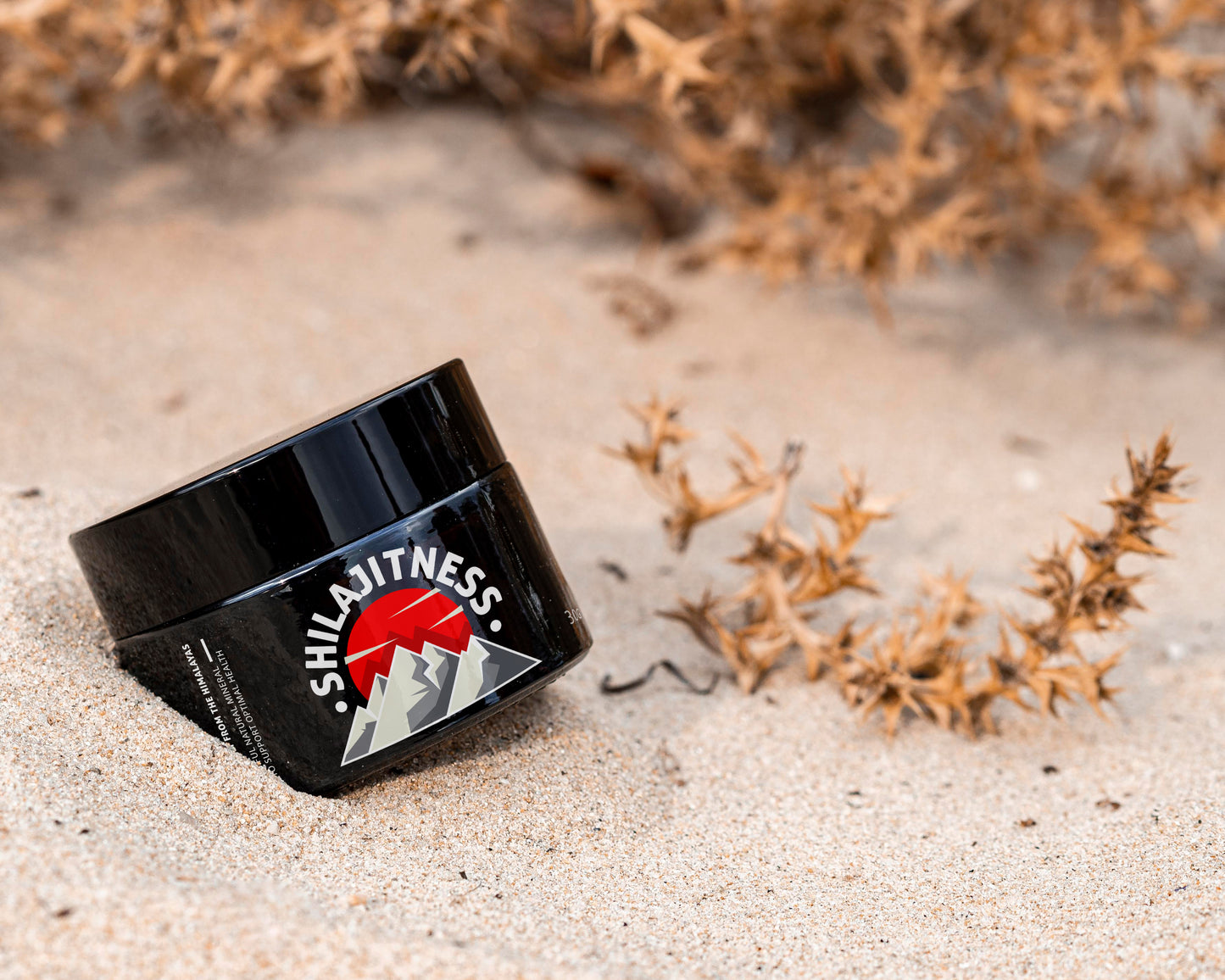
What is Shilajit? A Comprehensive Guide to Its Origins and Benefits
Share
Introduction
Shilajit, a natural substance formed over centuries in the rocks of the Himalayas and other mountainous regions, is widely revered for its potent health benefits. Known for its blackish-brown appearance and sticky texture, Shilajit has been used in Ayurvedic medicine for thousands of years. This blog will take a closer look at its origins, chemical composition, and how it can improve health.
Origins of Shilajit:
Shilajit is a tar-like substance that seeps from rocks in high-altitude regions, especially in the Himalayas, Altai, Caucasus, and Tibetan mountains. It forms from the slow decomposition of plant material under specific environmental conditions. Over centuries, this organic matter is compressed, allowing it to absorb essential minerals from the surrounding rocks. This process creates a potent, nutrient-rich resin.
-
Key Facts:
- Found primarily in high-altitude regions like the Himalayas .
- Formed through the gradual decomposition of organic matter .
- Rich in minerals like iron, zinc, copper, and manganese .
Chemical Composition:
Shilajit is a complex substance, made up of over 85 minerals, fulvic acid, and humic substances. Fulvic acid is particularly notable as it enhances nutrient absorption at a cellular level and acts as a powerful antioxidant, protecting cells from damage .
-
Main components:
- Fulvic Acid: Supports nutrient absorption, has antioxidant properties .
- Minerals: Provides essential micronutrients such as iron, magnesium, calcium, and zinc .
- Humic Acids: Aid in detoxification and help improve gut health .
Health Benefits of Shilajit:
The benefits of Shilajit extend across various aspects of physical and mental health:
- Energy and Stamina: Known for its ability to enhance energy levels and combat fatigue, Shilajit works by increasing the production of ATP (adenosine triphosphate) in the body, improving physical performance and endurance .
- Brain Function: Shilajit has neuroprotective properties that help prevent cognitive decline. Its antioxidant content may aid in protecting brain cells from damage caused by free radicals .
- Anti-aging: Shilajit supports mitochondrial function, which declines with age. It also helps the body produce collagen, improving skin elasticity and reducing wrinkles .
- Immune System Support: The minerals and compounds in Shilajit boost immunity by improving the body’s ability to fight infections .
- Sexual Health: In traditional medicine, Shilajit has been used to increase libido, fertility, and testosterone levels in men .
How to Use Shilajit:
Shilajit is typically available as a resin or powder, and it can be consumed by dissolving a small portion in warm water, tea, or milk. The recommended dose is around 300-500 mg per day, but it’s important to consult with a healthcare provider before starting any supplement regimen .
Side Effects and Safety:
While Shilajit is generally considered safe when taken in recommended doses, improper use can lead to side effects. Raw or unprocessed Shilajit may contain heavy metals or contaminants, so it's crucial to buy from a reputable source . Some people may also experience allergic reactions or gastrointestinal discomfort .
Conclusion: Shilajit is a powerful natural supplement with a rich history in traditional medicine. Its wide range of health benefits makes it a valuable addition to your wellness routine, but it’s essential to ensure that you're using a high-quality product and following recommended dosages.
























